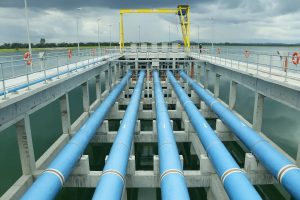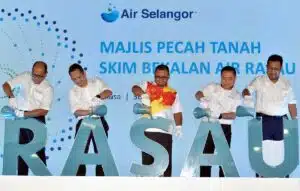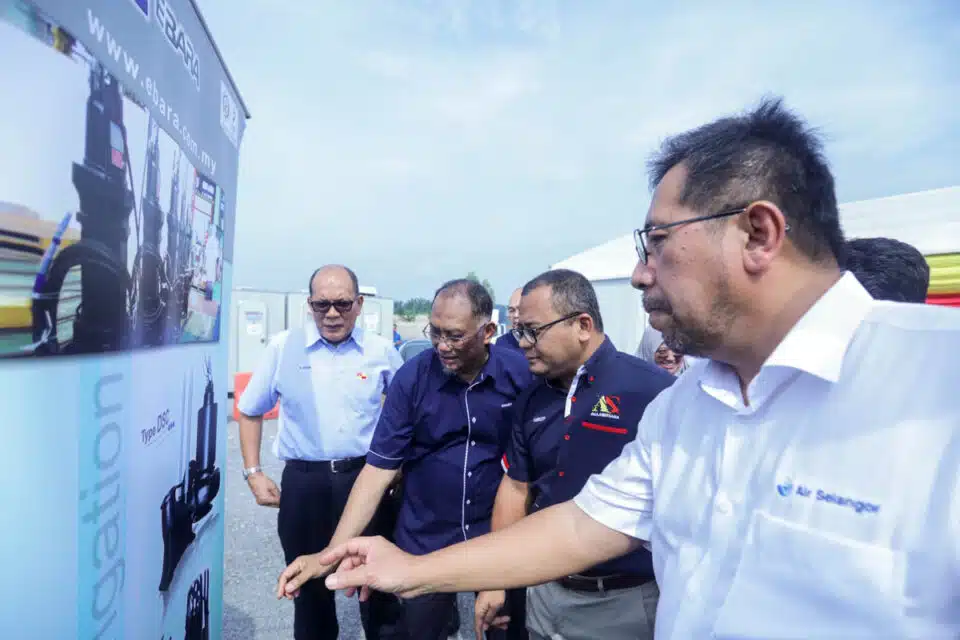By Selangor Journal Team
HAVING faced numerous water challenges resulting from rapid urbanisation and increased demand in both domestic and industrial sectors, Selangor has become all too familiar with the complex issues surrounding clean water supply.
Acknowledging the need for a new approach, the state government has taken a significant step towards protecting its water resources and enhancing its management with the establishment of the Raw Water Security Scheme (SJAM).
This comprehensive and proactive approach aims to safeguard the state’s water sources, ensuring its security and uninterrupted availability for its residents, according to Infrastructure and Public Amenities, Agricultural Modernisation and Agro-based Industry Committee chairman Izham Hashim.
As a collaboration involving multiple entities responsible for water management in the state, including Pengurusan Air Selangor Sdn Bhd (Air Selangor), the Department of Irrigation and Drainage (JPS), Selangor Water Management Authority (Luas), and Indah Water Konsortium Sdn Bhd (IWK), SJAM represents a committed effort to safeguard the precious resource, said Izham.
“SJAM aims to bring together all stakeholders involved in water management, regardless of their scope, to collectively deal with water pollution and ensure the preservation of water sources.
“By consolidating expertise and resources, Selangor seeks to proactively address pollution challenges and maintain uninterrupted water supply to its residents,” he said in an interview with Selangor Journal on June 1.

One of the primary concerns SJAM seeks to address is the potential impact of pollution on Selangor’s water treatment plants (WTPs) in Sungai Semenyih, Rantau Panjang, and the three treatment plants in Sungai Selangor (commonly referred to as SSP1, SSP2, and SSP3).
Collectively supplying approximately 67 per cent of Selangor’s water, any pollution incidents affecting these crucial plants would have significant consequences, potentially impacting millions of accounts and residents, said Izham.
“We currently have around 2.6 million accounts to service, so if two-thirds of these accounts were affected, it would be a substantial impact. We have experienced this in the past, which is why we have put a lot of thought into finding ways to clean up water pollution without it affecting the water supply.
“When pollution enters the intake, it takes approximately 12 hours to stop the pollution and another 12 hours to clean and flush the system. Then, it takes 24 hours to distribute the water to the balancing reservoirs and stabilise the supply before it can reach households.
“It is a lengthy process, unlike electricity, which can be switched on and off immediately. So, the focus is on preventing pollution from entering the intake in the first place,” he said.
One game-changing project under SJAM is utilising ponds as an alternative water source during river pollution incidents.
“For instance, the SSP1, SSP2, and SSP3 water treatment plants rely on a shared large pond known as Horas 600 as an alternative water source during river pollution incidents.
“Water sourced from the pond can sustain the supply for a minimum of five days, although our experience shows that pollution incidents rarely exceed one day. So, prompt detection of pollution is vital in minimising the duration of relying on the pond as an alternative water source,” said Izham.
For context, the Hybrid Off River Augmentation Storage (Horas) 600 reservoir can produce 300 million litres of raw water per day (MLD) and is able to supply to the people in the state and Kuala Lumpur.
Future plans
Izham also revealed that as part of the water management policy, the future approach will no longer involve taking water directly from the river for any treatment plants.
This can be seen in the construction of the new water treatment plant in Rasau, where nine existing tin mining ponds covering 489 hectares have been identified and utilised as an Off-River Storage Facility (ORS) for a potential water source.
“That’s why the new treatment plant goes through nine different ponds before reaching the intake. This gives us time to perform pretreatment or any necessary measures before the water reaches the intake,” said Izham.
With all these measures in place, Izham is confident that SJAM could secure the state’s future water needs.
“We need to manage water holistically because it’s becoming a scarce commodity.
If we don’t plan and manage it properly, we’ll face huge problems in the future.
“The whole idea of SJAM is to maintain and manage the source of water, whether it’s from rain, rivers, or other sources, to preserve the quality and quantity of raw water and ensure an uninterrupted supply.
“Additionally, we need to address wastewater issues and manage floods effectively to protect the water system,” he said.
Almost there
On May 18, Dato’ Seri Amirudin Shari launched the SJAM initiative, which is expected to commence operation early next year.
At the launching ceremony, the Menteri Besar said that the project involves four packages, including the pumping process, construction of pumping stations, reservoirs and river diversions, and is currently at a 51 per cent completion rate.

“The project has been planned and implemented since 2020 and is expected to be completed by October. However, there are several stages, including trial processes and simulations, so we anticipate the project to be operational early next year.
“This project is crucial for Selangor as it caters to the needs of 1.6 million accounts, involving seven million users, including the Klang Valley and Putrajaya, as well as various industrial sectors,” he said when met at the launch at the Horas 600 site in Kuala Selangor.
Amirudin stated that the project is fully funded by the state government and was initiated after the state faced numerous water supply disruptions, affecting daily routines.
“Eight cases of plant shutdowns occurred in 2020 due to the contamination of raw water sources in Sungai Selangor and once in Sungai Semenyih, while in 2021, three cases of odour pollution occurred.
“Thank God, in 2022, with several efforts that we have initiated since 2020, although not yet perfect, the water transfer programme and reservoir construction have reduced pollution incidents.”
The Selangor Budget 2023 allocates RM332 million to ensure the success of SJAM, including RM100 million specifically designated for ensuring the operation of water treatment plants in the event of contamination.
SJAM outlines four steps to be taken as an overall solution when river pollution occurs, whether upstream or downstream. They are:
- to make amendments to the Luas Enactment 1999. The amendments were passed in the Selangor State Legislative Assembly on November 2020 to conduct monitoring and surveillance by Luas through its Skuad Pantas
- to implement a pilot project on biological treatment or bioremediation for the restoration of water quality in Sungai Gong to construct raw water pumping infrastructure at Horas 600 to channel water into Sungai Selangor, and at Pond C into Sungai Semenyih.
Lauded effort
According to the Minister of Natural Resources, Environment and Climate Change, Selangor is among the two best states in managing non-revenue water (NRW).
Its minister, Nik Nazmi Nik Ahmad, said besides Selangor, another state that has shown impressive performance in NRW management is Johor.
“Selangor and Johor are the best states in managing NRW, and that is why we are providing a matching grant of RM110 million, in addition to state expenditures.

“Selangor has shown good performance, but it needs to move in line with the construction of WTPs, not just focusing solely on NRW,” he said at the launch of the Rasau Water Supply Scheme in Kampung Seri Cheeding, on May 30.
Nik Nazmi also lauded the Selangor government for building the Rasau River Water Treatment Plant under the scheme to ensure the sustainability of a clean and safe supply.
“The state government has taken proactive measures as the water reserves issue in Selangor needs to be enhanced by diversifying water sources.
“If we rely on one or two sources and there is a supply disruption, it will affect many people. With this project, it can increase reserves and provide various sources of water supply in Klang,” he added.
This article first appeared in the Selangor Journal monthly June 2023 edition, published on June 3, 2023.





